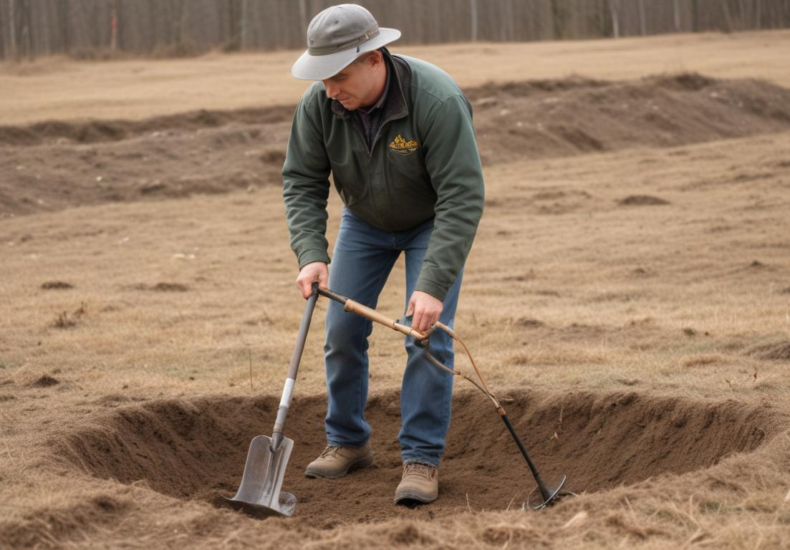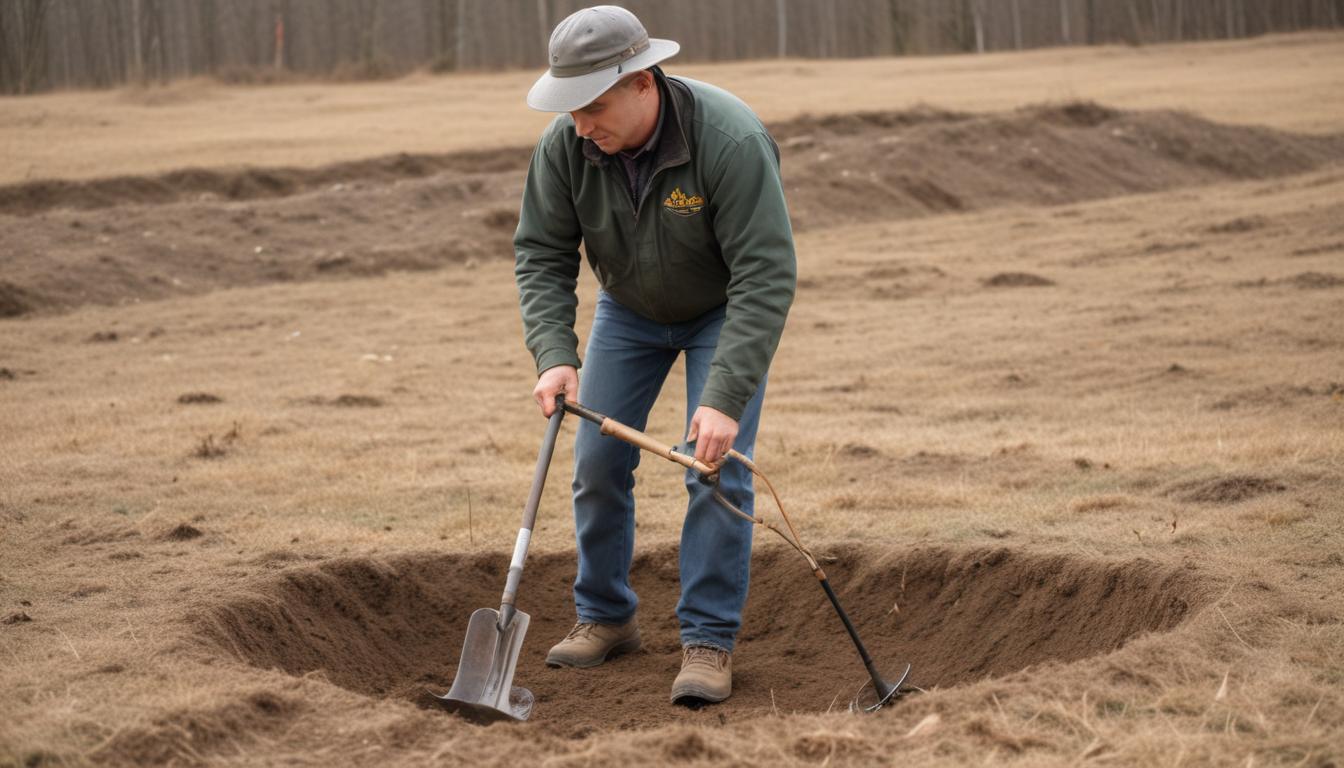
How to dig responsibly while metal detecting
Before heading out with your metal detector, it is crucial to familiarize yourself with local and national regulations that govern this hobby. Different areas may have specific laws designed to protect historical sites and natural environments, underscoring the importance of metal detecting ethics. For instance, national parks in the United States typically prohibit metal detecting entirely to preserve their natural and historical integrity. Similarly, many states require detectors to obtain a permit before exploring state-owned lands.
Local city and county regulations can also vary widely. Some areas might allow detecting in public parks as long as you follow certain guidelines, while others might restrict the activity to specific zones or times. It’s also common for local ordinances to require that any significant finds, such as items that could be considered historical artifacts, be reported to local authorities. This ensures that valuable historical data is not lost.
In addition to government rules, many metal detecting clubs establish their own codes of conduct which promote responsible practices that go beyond legal requirements. These guidelines often emphasize respecting the property rights of others, leaving environments as undisturbed as possible, and properly disposing of waste, such as the holes from digging. Adhering to these guidelines not only helps protect the environment but also upholds the reputation of the metal detecting community.
Understanding these regulations and ethical guidelines is essential not just for legal compliance but also for preserving the sport of metal detecting for future generations. Whether you’re exploring a local beach or a remote historical site, knowing and respecting the rules is key to being a responsible enthusiast. Always do your research and consider contacting local metal detecting clubs or park offices for the most current information and any necessary permits before you start your search. This proactive approach will ensure that your metal detecting adventures are both enjoyable and conscientious.
Choosing the right tools for responsible digging
Choosing the right tools for responsible digging is crucial to ensure you are both efficient and respectful of the environment while enjoying metal detecting. The primary goal is to minimize ground disturbance while maximizing the chance of recovery. Therefore, selecting tools that are conducive to precision and small-scale excavation can significantly lessen the impact of digging.
One of the essential tools in the responsible detectorist’s kit is a digging trowel specifically designed for metal detecting. These trowels are typically narrower and sharper than standard garden trowels, allowing you to make more precise digs. This precision not only helps in minimizing the size of the hole needed but also reduces damage to the root systems of surrounding vegetation. For environments where larger digs might be necessary, a digging knife or a specialized digging tool known as a ‘lesche’ can be used for slicing through tough roots with minimal disruption.
A pinpointing metal detector is another crucial tool. A pinpointer can significantly speed up the recovery of targets and reduce the size of the hole needed. By locating the exact position of the item before digging, it avoids unnecessary disturbance to the surrounding area. When paired with a hand-held probe, these tools ensure that digging is done efficiently and responsibly.
In sandier or loose soil environments, such as beaches, a sand scoop is indispensable. These scoops allow for quick sifting and minimize the displacement of sand, thus aiding in faster restoration of the site to its natural state. For metal detecting in such areas, choosing a scoop with smaller holes can also help in reducing the loss of small artifacts.
Additionally, wear and carry gear that supports sustainable practice, such as knee pads for low impact kneeling rather than shuffling and a carry pouch or bag for collecting trash uncovered during the process. Removing trash from the sites not only improves the aesthetic and ecological facets of the area but also aligns closely with the principles of metal detecting ethics.
Incorporating these digging tips and utilizing specific tools designed for metal detecting activities can drastically improve the sustainability of this hobby. Each tool has been crafted to aid in the responsible enjoyment of metal detecting, ensuring minimal impact on the environment while allowing enthusiasts to continue this explorative pursuit.
Techniques for minimizing ground disturbance
One of the most effective techniques for minimizing ground disturbance during metal detecting involves careful planning and execution of your digging method. Strategic digging is essential to preserve the integrity of the site and comply with metal detecting ethics. When a potential find is indicated by your detector, the first step is to use your pinpointer to narrow down the exact location of the object. This approach not only speeds up the recovery process but also limits the area that needs to be disturbed.
Once the target area is identified, gently remove the top layer of soil using a small, sharp digging tool. This should be done meticulously to avoid unnecessarily disturbing a large area of soil. One preferred method among responsible detectorists is the ‘plug technique.’ This involves cutting a circular or U-shaped plug of turf which can be lifted out, leaving a hinge of grass on one side. This hinge preserves the roots, enabling the plug to be replaced exactly as it was with minimal damage to the grass.
While digging, it’s important to keep your holes as small and as neat as possible. Efficient use of a hand trowel or a digging knife helps maintain the precision needed. After retrieving the item, sift through the removed soil carefully to ensure no other objects are hidden. Use a finds pouch to store any artifacts or trash you unearth, maintaining the cleanliness and integrity of the environment.
After the object has been recovered and the soil has been sifted, the next crucial step is hole restoration. Replace the soil and the turf plug in the reverse order they were removed. Press down gently but firmly on the plug to ensure it’s securely in place, promoting quicker healing of the disturbed area. Water the spot if possible, as this can help accelerate the recovery process of the vegetation.
Practicing these digging tips not only aligns with the principles of responsible metal detecting but also ensures minimal disruption to the environment. By respecting the natural and historical significance of the locations we explore, we contribute positively to the sustainability of our hobby and the environments we cherish.
Handling and preserving found artifacts

When handling and preserving found artifacts during metal detecting, it is essential to approach each find with respect and care to maintain its condition and historical value. Every item unearthed has a story and possibly significant cultural or archaeological importance. Therefore, understanding how to handle these finds responsibly is a crucial aspect of metal detecting ethics.
Initially, when you discover an item, assess its stability and susceptibility to damage. If an artifact appears fragile or historically significant, it may be best to photograph it in situ and notify the relevant authorities who can manage its removal professionally. For other finds that you choose to retrieve, gentle extraction and minimal handling are key. Always use clean, dry hands, or wear gloves to prevent oils from your skin from corroding the material.
Once the artifact is removed from the ground, avoid cleaning it vigorously, as rough handling can diminish its value or obscure critical details. Soft brushes and wooden picks can be employed gently to remove soil or debris. For metal objects, corrosion can be a concern; resist the temptation to polish or use harsh chemicals which can irreversibly damage the patina that has developed over time.
Documenting the location and depth of the find is also an important practice that supports both historical research and responsible metal detecting. Use a GPS device or a detailed map to record the precise coordinates, which can be invaluable information for historical records or further archaeological exploration. This data, combined with photos of the artifact and its surroundings, enhances our understanding of the site’s history and usage.
For storage, individual packaging in acid-free materials or containers specifically designed for conservation purposes is recommended. These materials ensure that items are not degraded by external factors such as humidity, temperature, or pressure. Keeping detailed records including descriptions, conditions, and recovery locations along with the artifacts also aids in preserving their historical context.
Responsibly handling and preserving artifacts not only aligns with the principles of metal detecting ethics but also significantly contributes to the understanding and appreciation of our shared history. By being mindful of these practices, detectorists can ensure that they respect the past and protect the integrity of their discoveries for future generations.
Restoring the site post-detection
Restoring the site post-detection is a fundamental aspect of maintaining responsible metal detecting ethics. After all signs of exploration have been carefully managed and finds recovered, the final step involves ensuring that the area appears as undisturbed as possible. This practice not only respects the environment but also reinforces the positive image of metal detecting as a considerate and sustainable hobby.
The process of site restoration begins by carefully replacing the sod or soil that was initially displaced. If using the plug technique discussed earlier in the digging tips, ensure that the plug is returned to its original position, aligning it so as to fit perfectly back into place. It’s crucial to press down gently on the replaced sod, encouraging it to reestablish contact with the surrounding earth and roots. This simple action greatly enhances the sod’s ability to heal and reintegrate with minimal visible disturbance.
In areas where grass or other vegetation has been disrupted, a conscientious detectorist might consider carrying a small amount of water to pour over the restored plug. Moisture significantly aids in the rapid recovery of the disrupted turf, helping it heal faster and blend seamlessly with its untouched surroundings. Additionally, if any debris or litter was unearthed during the digging process, it should be responsibly disposed of, thereby leaving the site cleaner than it was found, reflecting a commitment to environmental stewardship.
If the site involves a beach or sandy area, ensure to level any holes or disturbances made during the search. Using a rake or your hands to smooth over the disturbed sand helps prevent any physical hazards for other beachgoers and protects wildlife habitats. Furthermore, retrieving and responsibly disposing of any trash found in such environments not only cleans but also conserves these popular public spaces.
Ultimately, restoring a site post-detection is a testament to a detectorist’s respect for nature and commitment to the principles of metal detecting ethics. Such practices ensure that our activities do not degrade the quality of the environments in which we detect and that these locations remain enjoyable for both other visitors and wildlife alike. Tending to the site with care encourages a continued welcome for the hobby in communities everywhere, sustaining the positive bridge between metal detecting enthusiasts and the general public.
You may also like
Archives
Calendar
| M | T | W | T | F | S | S |
|---|---|---|---|---|---|---|
| 1 | 2 | |||||
| 3 | 4 | 5 | 6 | 7 | 8 | 9 |
| 10 | 11 | 12 | 13 | 14 | 15 | 16 |
| 17 | 18 | 19 | 20 | 21 | 22 | 23 |
| 24 | 25 | 26 | 27 | 28 | 29 | 30 |
Leave a Reply